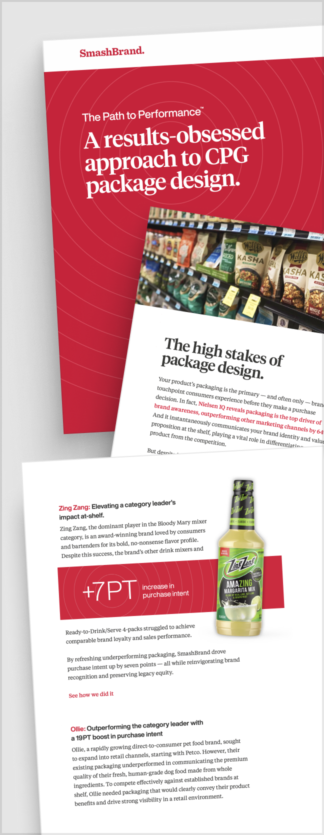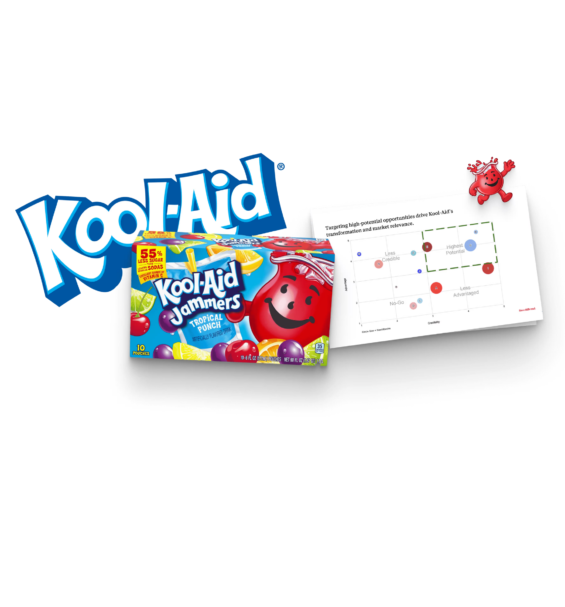Every second your brand exists on a shelf or a screen, it’s being judged harshly. Consumers are making split-second decisions, and if your identity doesn’t connect instantly, it’s game over. That’s why brand ideation isn’t just important—it’s essential.
This creative and strategic process goes beyond logos and taglines, transforming your brand into a magnetic force that drives trust, loyalty, and action. By combining design thinking, sharp brand strategy, and a seamless ideation process, you’ll create a blueprint for success.
Ready to discover how a powerful brand ideation strategy, digital marketing, and a winning content strategy can amplify your idea and make it dominant? Let’s dive in.
Brand ideation vs product ideation.
While many people think brand ideation is the same as product ideation, it isn’t. It differs in focus, timelines, and impact on consumer perception and business growth. The following are the main differences between a brand ideation strategy and a product ideation strategy:
| Aspect | Brand Ideation | Product Ideation |
| Definition | Strategic process of defining or evolving a brand’s identity and positioning. | Tactical process of creating or improving products to meet consumer needs. |
| Focus | Long-term: Emotional connection, market perception, and adaptability. | Short-term: Features, flavors, and functionality tailored to trends. |
| Objective | Build trust, loyalty, and competitive advantage across categories. | Drive immediate sales growth and category innovation. |
| Scope | Broad: Covers visual identity, brand voice, and overarching strategy. | Narrow: Focuses on specific product lines or SKUs. |
| Consumer Impact | It shapes how consumers emotionally engage with the brand over time. | Addresses immediate consumer needs and preferences. |
| Metrics | Brand equity, consumer perception, and lifetime value. | Sales performance, market share, and product satisfaction. |
| Trend Alignment | Identifying and embodying broad cultural or generational values. | Adopting trends like plant-based, sugar-free, or functional ingredients. |
| Duration | Long-term evolution over years or decades. | Short-term initiatives, usually 6-24 months from ideation to market launch. |
| Collaboration | Cross-functional, involving marketing, insights, and design teams. | Focused teams with R&D, category managers, and supply chain collaboration. |
| Example | KIND Snacks’ Expansion: Positioning as a “healthier lifestyle” brand, expanding into frozen treats and smoothie bowls. | Oreo’s Limited Edition Flavors: Seasonal releases like Pumpkin Spice to excite loyal customers. |
What does brand ideation achieve?
Brand ideation unlocks the potential for growth by turning bold new ideas into strategies that strengthen your brand identity. Focused idea generation and collaborative ideation sessions drive innovation that resonates with consumers.
Whether exploring brand stretching examples or crafting a product line extension, the process ensures your brand stays relevant and future-ready. By aligning content ideation with a long-term strategy, you create meaningful content ideas that amplify your presence across channels.
Successful brand stretching takes your identity into new categories, building trust while fueling expansion. Ultimately, brand ideation transforms abstract concepts into actionable plans, setting the stage for measurable, market-driven success.
Key pillars of effective brand ideation.
Effective brand ideation is built on structured ideation sessions, where creativity meets strategy. From refining an existing product to exploring untapped opportunities, the ideation phase aligns bold thinking with data-driven insights. By minimizing brand development costs and focusing on strategic brand development, brands achieve impactful marketing outcomes that drive long-term growth.
The following are the key pillars of an effective brand ideation strategy:
Consumer-centric insights.
Consumer-centric insights are the foundation of effective brand positioning. By understanding customer needs, purchase drivers, and behaviors, brands can craft strategies that truly resonate. These valuable insights come from tools like surveys, POS data, and social listening, offering a deep dive into what motivates consumers.
It’s not just about a single product idea; it’s about connecting data to a great idea that drives loyalty. With these insights, teams can blend creative thinking with data-driven decisions, turning raw information into an actionable big idea. This approach paves the way for innovative solutions that address real consumer needs while generating ideas that enhance branding across every touchpoint.
Data-driven creativity.
Data-driven creativity bridges the gap between analytics and creativity, ensuring every concept resonates with consumers. Successful ideation techniques merge insights from data-driven and creative analytics with bold, ideas to craft tailored solutions. For instance, Netflix leverages viewer data to inspire content strategies, while Oreo uses social trends for timely campaigns.
These creative solutions are born from strategic thinking, ensuring designs and messaging foster brand loyalty while meeting client expectations. By integrating insight with imagination, brands transform raw data into meaningful actions, creating campaigns that inspire and connect. The result? Smarter decisions, impactful branding, and innovations that elevate both the clients and the brand itself.
Iterative and integrated approach.
An iterative and integrated approach ensures innovative ideas evolve into impactful outcomes. Testing, refining, and re-testing ideas provide clarity, aligning them with your target market while reducing risks. Unlike siloed processes that lead to inefficiencies, collaboration among stakeholders ensures every aspect—from visual identity to content creation—supports the overarching marketing strategy.
This seamless integration generates fresh ideas and fosters creative inspiration, ensuring your brand consistently delivers a lasting impression. For example, iterative testing helps refine messaging and designs to resonate more deeply with consumers, ensuring alignment with market needs. By combining data and feedback, brands create agile strategies that evolve with market trends and consumer preferences.
Guaranteed outcomes: the focus of SmashBrand.
Guaranteed outcomes in brand ideation center on delivering measurable, performance-driven results. By aligning brand positioning with customer needs, this approach ensures every great idea serves a clear purpose—boosting sales, improving market share, or building brand loyalty. Using insight and data, brands can reduce risks and ensure success by transforming creative ideas into actionable, innovative solutions.
With a results-focused mindset, ideation techniques prioritize outcomes that resonate with clients and consumers. By combining creative thinking with valuable insights, brands move from a single product idea to a transformative big idea that drives loyalty and growth. This process consistently generates ideas that redefine branding and create long-lasting connections.

Path to Performance™
Taking a results-obsessed approach to CPG package design
Learn how SmashBrand’s proprietary process – rooted in scientific principles, informed by data, and validated by your target audience – takes the guesswork out of package design and delivers guaranteed results.
"*" indicates required fields
Steps to a successful brand ideation process.
Every successful ideation process requires a systematic approach. The following are the essential steps to craft and implement an impactful brand ideation strategy:
Research and discovery.
Define clear goals, such as improving market share, building brand loyalty, or repositioning an existing brand. Analyze competitors to uncover strengths, weaknesses, and opportunities, and assess the current brand landscape to identify trends. Combine qualitative data, such as interviews, focus groups, and social listening, with quantitative data, such as sales reports, consumer surveys, and market analytics.
Tools like POS data and shopper behavior studies provide actionable insight. This comprehensive approach helps understand consumer needs, purchasing drivers, and category dynamics, ensuring the ideation process is grounded in market realities. Understanding your ecosystem allows you to identify gaps and create innovative solutions.
Consumer persona development.
Consumer Persona Development is crucial for transforming research findings into actionable strategies. By building detailed profiles of your target audience, you can humanize your data and align your brand with their needs.
The following are the steps to develop consumer personas:
- Analyze Data: Use qualitative and quantitative research to identify patterns in demographics, behaviors, and preferences.
- Segment Audiences: Group consumers based on shared characteristics, like lifestyle, values, or purchasing habits.
- Create Personas: Build profiles with names, ages, interests, challenges, and goals to make them relatable and tangible.
- Map Journeys: Understand their decision-making process and key touchpoints.
This clarity helps brands craft messaging, brand positioning, and creative ideas that resonate, driving deeper connections, loyalty, and stronger market performance.
Core brand definition.
Through strategic thinking, you define your mission (what you stand for), vision (where you’re headed), and values (what drives your actions). These elements, paired with clear, unique selling propositions (USPs), create a compelling narrative that differentiates your brand in the target market.
This step inspires innovative ideas and aligns stakeholders by providing a shared purpose. It also sets the tone for content creation and visual identity, ensuring consistency across all platforms. By refining fresh ideas rooted in the brand’s core, you develop an authentic story that resonates, making your brand memorable and relatable.
Concept development.
Concept Development translates research into actionable ideas, forming the backbone of your brand identity. This phase focuses on innovation, crafting designs, messaging, and positioning that resonate with your audience while reflecting the brand’s core. Using market mapping, you identify gaps and opportunities to differentiate your brand effectively.
Develop a compelling value proposition that uniquely communicates why your brand matters and how it addresses customer needs. Collaboration with stakeholders ensures alignment and builds momentum for the next steps.
This stage combines creativity with strategic insights to create a cohesive brand identity that is visually impactful and emotionally engaging. This gives your brand a distinct edge in a competitive market.
SmashBrand excels in innovation and concept development, offering end-to-end services that transform raw ideas into market-ready brands. Using market mapping and consumer-driven insights, they identify opportunities for differentiation and develop cohesive designs, messaging, and value propositions tailored to the target audience.
Validation through testing.
Validation ensures that brand concepts resonate with real consumers. This step gathers actionable feedback through methods like shelf tests, where products are tested in a retail environment to assess visibility and appeal, and focus groups, which provide insights into consumer perceptions and preferences.
Testing refines ideas by identifying strengths and addressing weaknesses, minimizing risks before launch. This process ensures alignment with target audiences, leading to data-backed innovations that enhance market success and brand loyalty.
Common challenges in the brand ideation process.
While bold, innovative ideas are essential, they must align with consumer-validated insights. Relying solely on creativity without grounding in data can lead to misaligned concepts. Use consumer testing and analytics to ensure creative ideas resonate with the target audience while still pushing boundaries.
Avoiding subjectivity.
Internal opinions can skew decision-making and lead to biased branding. Overcome this by prioritizing consumer feedback through focus groups, surveys, and testing. This objective input ensures the brand aligns with customer needs rather than personal preferences.
Overcoming fragmented workflows.
Siloed teams create inconsistencies and delays. Adopt an integrated approach that aligns all stakeholders, from design to marketing, under a unified strategy. This streamlines processes, maintains consistency, and accelerates progress.
Subscribe to
Nice Package.
A monthly newsletter that unpacks a critical topic in the FMCG & CPG industry.
Free Resource.

CPG product repositioning guide.
Explore the five undeniable signs your CPG product needs repositioning along with strategies for leveraging consumer insights for a guaranteed market lift.
Learn More About CPG product repositioning guide.


